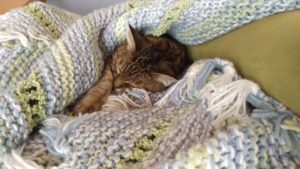Embracing the Shadow of Dis-ease (also Martha’s wisdom)
Thursday, December 6th, 2018 On my recent trip to Toronto, Dr. Joaquin Farias made a comment that we need to accept something before we can change it. This was very powerful to me.
On my recent trip to Toronto, Dr. Joaquin Farias made a comment that we need to accept something before we can change it. This was very powerful to me.
I do not accept that I have Parkinson’s disease. I’ll find every loophole to try to convince myself I do not and that does not serve me. I think of acceptance as accepting that I will get worse, that my life will be horrible and that I will constantly struggle. Accepting this dis-ease does not mean these things. If I accept it I can do things to make me better, I can accept a cure when it is discovered, and I can take advantage of what is available now to help me.
Right now my body is in a battle to fight it but it is part of me and like our shadow self the only way to heal is to integrate the shadow and transform it from within.
This is true of many chronic dis-eases, they are a part of us that is misbehaving or out of regulation. We are fighting ourselves when we fight them. It’s like fighting a hurt child, we need to comfort that part of us and try to understand what it needs and what it is trying to teach us.
I am reminded of the wisdom of a very special cat I treat named Martha. I’ve been working with Martha for over four years now. Martha came to me with metastatic hemangiosarcoma in her abdomen, which is one of the worst cancers we work with in veterinary medicine. We did no chemo or surgery, we did not attack it. Instead we started acupuncture to support and integrate her body and a couple herbals to slow it down and four years later I still see Martha every two weeks. I can no longer feel her tumor, there may very likely still be cancer cells there but her body keeps them in check. We never denied that Martha had cancer, we accepted it and did what we could to make her life and health excellent. She is now 18 years old and her biggest issues are arthritis and her aim in the cat box.
 I want to be like Martha. I can have Parkinson’s and still have a good life. I can accept that medication makes my life better, I can exercise like crazy, eat well, and take good care of myself. I will never give up on getting better but acceptance is key to me transforming this. You can’t change something if you don’t look it in the eye, if you are afraid of it or if you don’t accept it. I’m not totally there yet but I’m trying.
I want to be like Martha. I can have Parkinson’s and still have a good life. I can accept that medication makes my life better, I can exercise like crazy, eat well, and take good care of myself. I will never give up on getting better but acceptance is key to me transforming this. You can’t change something if you don’t look it in the eye, if you are afraid of it or if you don’t accept it. I’m not totally there yet but I’m trying.
And because you are going to ask – Turkey Tail mushroom and Yunnan baiyao were the two herbals Martha took.
